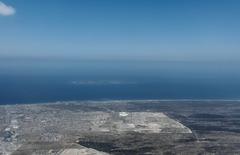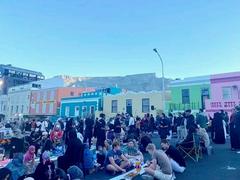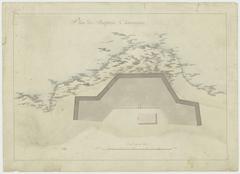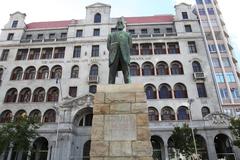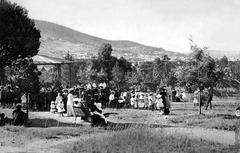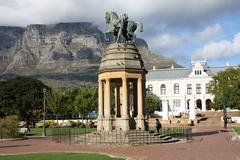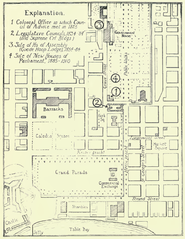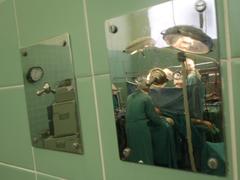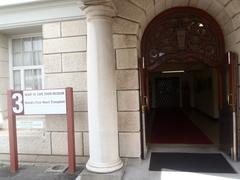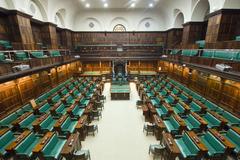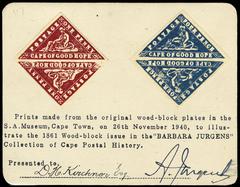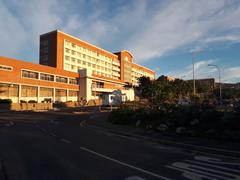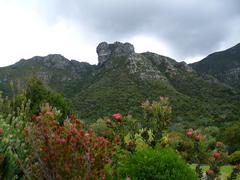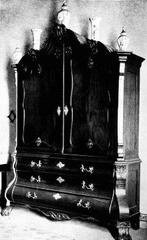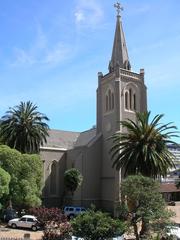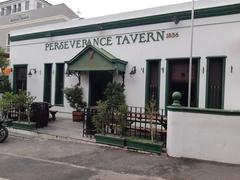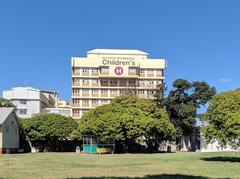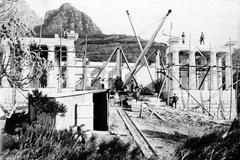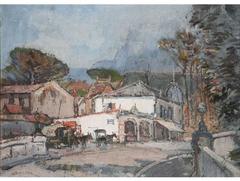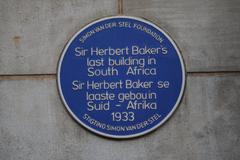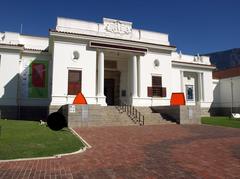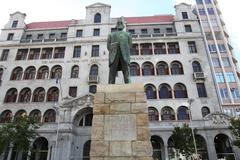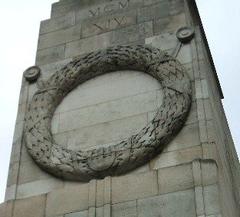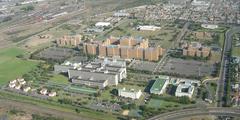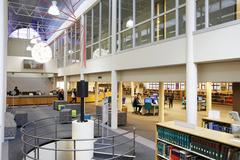Statue of Sir George Grey in Cape Town: Visiting Hours, Tickets, and Historical Significance
Date: 14/06/2025
Introduction
The Statue of Sir George Grey, located in Cape Town’s historic Company’s Garden, is a significant monument reflecting the complexities of South Africa’s colonial past. Erected in the late 19th century, the statue commemorates Sir George Grey—a British colonial governor whose policies greatly influenced the Cape Colony between 1854 and 1861. While Grey is credited with advancing education and legal reforms, his tenure also included controversial land policies that contributed to indigenous dispossession. Today, the statue serves as both a symbol of progress and a focal point for ongoing debates about colonial legacy and public memory.
Set within South Africa’s oldest public garden, the statue is freely accessible to visitors and surrounded by botanical and cultural landmarks. This guide provides comprehensive information on the statue’s history, visiting hours, accessibility, transportation, nearby attractions, and practical tips for a respectful and enriching visit. For those seeking deeper engagement, guided and self-guided tours are available, and digital resources such as the Audiala app can further enhance the experience (SA History Online; kapstadt-entdecken.de; South Africa Travel).
Who Was Sir George Grey?
Born in 1812, Sir George Grey served as Governor of the Cape Colony from 1854 to 1861. His administration was characterized by an ambitious program of educational and legal reform, advocating for the expansion of schooling and legal equality for indigenous populations. Grey’s personal library donation formed the foundation of what is now the National Library of South Africa, underscoring his commitment to public learning (kapstadt-entdecken.de). However, his legacy is complex: Grey’s policies included land acts that facilitated settler expansion and the dispossession of local communities—a contradiction that continues to inform debates about his commemoration.
The Statue of Sir George Grey in Cape Town
Artistic Features and Design
The statue is a bronze, life-size representation of Grey in formal attire, symbolizing his status as a scholar and administrator. He is depicted standing with one hand resting on a stack of books, directly referencing his intellectual legacy and the establishment of the National Library. The sculpture’s realism and dignified posture are characteristic of late Victorian commemorative art, and its stone plinth bears inscriptions detailing Grey’s contributions (kapstadt-entdecken.de). The statue’s orientation—facing the library—reinforces its symbolic link to knowledge and public service.
Exact Location and Setting
Located at the eastern entrance to the Company’s Garden on Queen Victoria Street, the statue stands directly in front of the National Library of South Africa. The garden itself is a lush, 8-hectare public park with historic trees, ornamental gardens, and several other monuments (kapstadt-entdecken.de). The area is pedestrian-friendly, with paved pathways and benches for rest and reflection.
Visiting Hours, Tickets, and Accessibility
- Visiting Hours: Daily from 7:00 AM to 7:00 PM (extended to 8:30 PM in summer months) (kapstadt-entdecken.de).
- Admission: Free for all visitors.
- Accessibility: Paved, wheelchair-friendly paths lead to the statue. Accessible restrooms and benches are available. Some older areas of the garden may have uneven surfaces—assistance can be requested at nearby visitor centers.
Getting There
- By Foot: Easily reachable from the city center and nearby hotels.
- By Public Transport: MyCiTi buses and other public transit options stop close to the garden’s main entrances.
- By Car: Metered street parking is available on Queen Victoria Street and surrounding roads, though parking can be limited during peak hours.
Nearby Attractions and Activities
The Company’s Garden is surrounded by several cultural and historic landmarks, making it an ideal starting point for exploring Cape Town:
- National Library of South Africa: Directly behind the statue.
- Iziko South African Museum and Planetarium: At the northern end of the garden.
- South African National Gallery: Showcasing art from South Africa and abroad.
- St. George’s Cathedral: A site of architectural and historical significance.
- Parliament Buildings: Accessible via Parliament Lane.
- Delville Wood Memorial Garden: Commemorating South African soldiers of World War I (My Trip to Cape Town).
- The Gardens Shul: South Africa’s oldest synagogue.
Photography and Special Events
Photography is permitted and encouraged—early mornings or late afternoons offer the best lighting and fewer crowds. The Company’s Garden occasionally hosts cultural events, art exhibitions, and open-air concerts near the statue. Check local listings or the City of Cape Town’s official website for event updates.
Practical Visitor Tips
- Rest Areas: Numerous benches and shaded spots throughout the garden.
- Cafés: The Garden Tea Room and Company’s Garden Restaurant serve refreshments and light meals.
- Restrooms: Public toilets are conveniently located.
- Safety: The garden is generally safe during daylight hours. Remain alert, especially in quieter areas, and keep valuables secure (capetown.travel).
- Weather: Cape Town weather is variable—bring a jacket and sun protection (theunconventionalroute.com).
- Etiquette: Respect the monument—do not climb on the statue or plinth.
Cultural Context and Historical Sensitivities
Colonial Legacy and Contested Memory
The statue is not just a historical artifact—it is a site of ongoing conversation about colonialism, indigenous dispossession, and public memory (SA History Online; Cape Town Museum). Grey’s reforms are lauded by some, while others view the statue as a reminder of land confiscation and colonial injustice. Visitors are encouraged to approach the site thoughtfully, acknowledging multiple perspectives and the continuing relevance of these debates.
Public Statues and Contemporary Discourse
Statues of colonial figures in South Africa have become focal points for discussions about history, reconciliation, and whose stories are told in public spaces (CapeTownETC). The Sir George Grey statue invites reflection and respectful engagement with these complex narratives.
Guided Tours and Educational Resources
Several walking tours of Cape Town’s historic center include the Company’s Garden and the Sir George Grey statue. These tours offer deeper context, exploring the intersections of colonial and indigenous histories. The National Library and neighboring museums host exhibitions and programs related to the site (South Africa Travel). For self-guided exploration, the City of Cape Town provides a self-guided walking tour PDF.
Frequently Asked Questions (FAQs)
Q: What are the visiting hours for the Sir George Grey statue?
A: The Company’s Garden is open daily from 7:00 AM to 7:00 PM, with extended hours in summer.
Q: Is there an entrance fee or tickets required?
A: No, admission is free.
Q: Are guided tours available?
A: Yes, local tour operators and cultural organizations offer guided tours that include the statue.
Q: Is the statue accessible for people with disabilities?
A: Main pathways are paved and wheelchair-friendly; some areas may have uneven surfaces.
Q: Can I take photographs?
A: Yes, but please be respectful and do not climb on the statue.
The Company’s Garden: Historical Overview
Originally established in 1652 by the Dutch East India Company as a vegetable garden for passing ships, the Company’s Garden evolved into a botanical and cultural precinct over centuries (Wikipedia; Gardens Apartments). Today, it features a blend of indigenous and exotic plantings, historic avenues, and a range of monuments—including the Sir George Grey statue, the first statue ever erected in South Africa (Gardens Apartments).
Other features include South Africa’s oldest cultivated pear tree, the Rose Garden, Delville Wood Memorial Garden, and the Gardens Shul. The garden also serves as a venue for community events, art exhibitions, and open-air concerts.
Travel Tips and Ethical Considerations
- Engage Respectfully: Recognize the statue’s layered meanings and approach with sensitivity.
- Acknowledge History: Learn about the full context of Sir George Grey’s legacy and its impact on Cape Town’s communities.
- Support Inclusive Storytelling: Participate in tours or educational programs that present balanced historical narratives.
- Safety: Visit during daylight hours and remain aware of your surroundings.
- Community Engagement: When discussing the statue, be open to diverse perspectives and local insights.
- Environmental Responsibility: Respect plant life and dispose of litter properly.
Summary of Key Points and Travel Tips
- The Sir George Grey statue is a prominent colonial-era monument in Cape Town’s Company’s Garden.
- Grey’s legacy is complex—celebrated for educational and legal reforms and criticized for facilitating land dispossession.
- Visiting the statue is free, with paved, accessible paths and nearby amenities.
- The site is best experienced in conjunction with guided tours and visits to nearby museums and galleries.
- Visitors are encouraged to approach with respect, openness, and an awareness of the statue’s contested place in South African history.
- For additional context, resources like the Audiala app and local heritage organizations offer guided content and updates (kapstadt-entdecken.de; South Africa Travel; SA History Online).
References
- https://www.kapstadt-entdecken.de/companys-garden/
- https://gardensapartments.co.za/news-articles/suburb-of-gardens-in-cape-town
- https://www.sahistory.org.za/people/sir-george-grey
- https://www.southafrica.net/gl/en/travel/article/company-s-garden-cape-town
- https://mytriptocapetown.com/tourism/tourist-attractions/companys-garden/
- https://www.capetown.travel/attractions/the-companys-garden/
